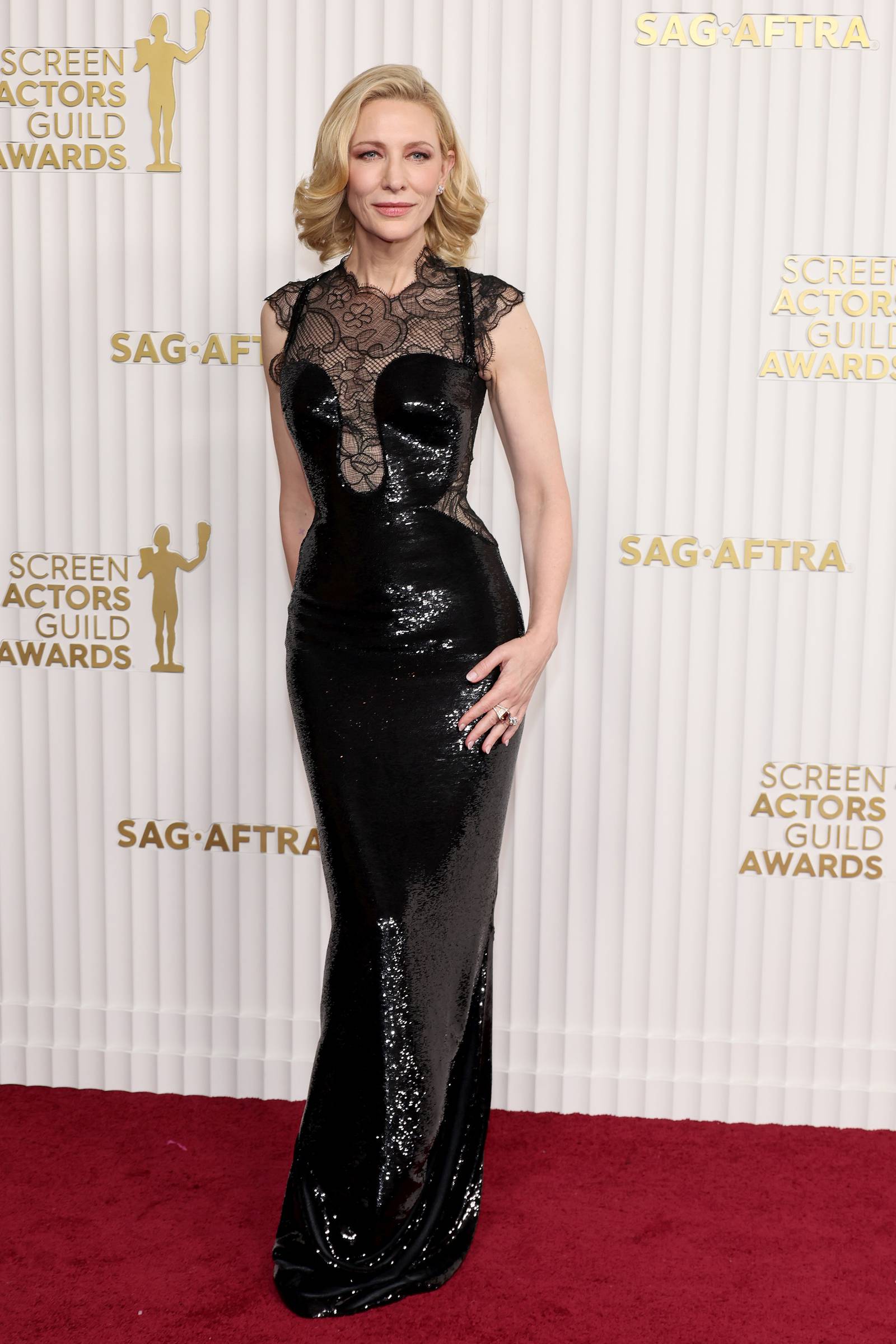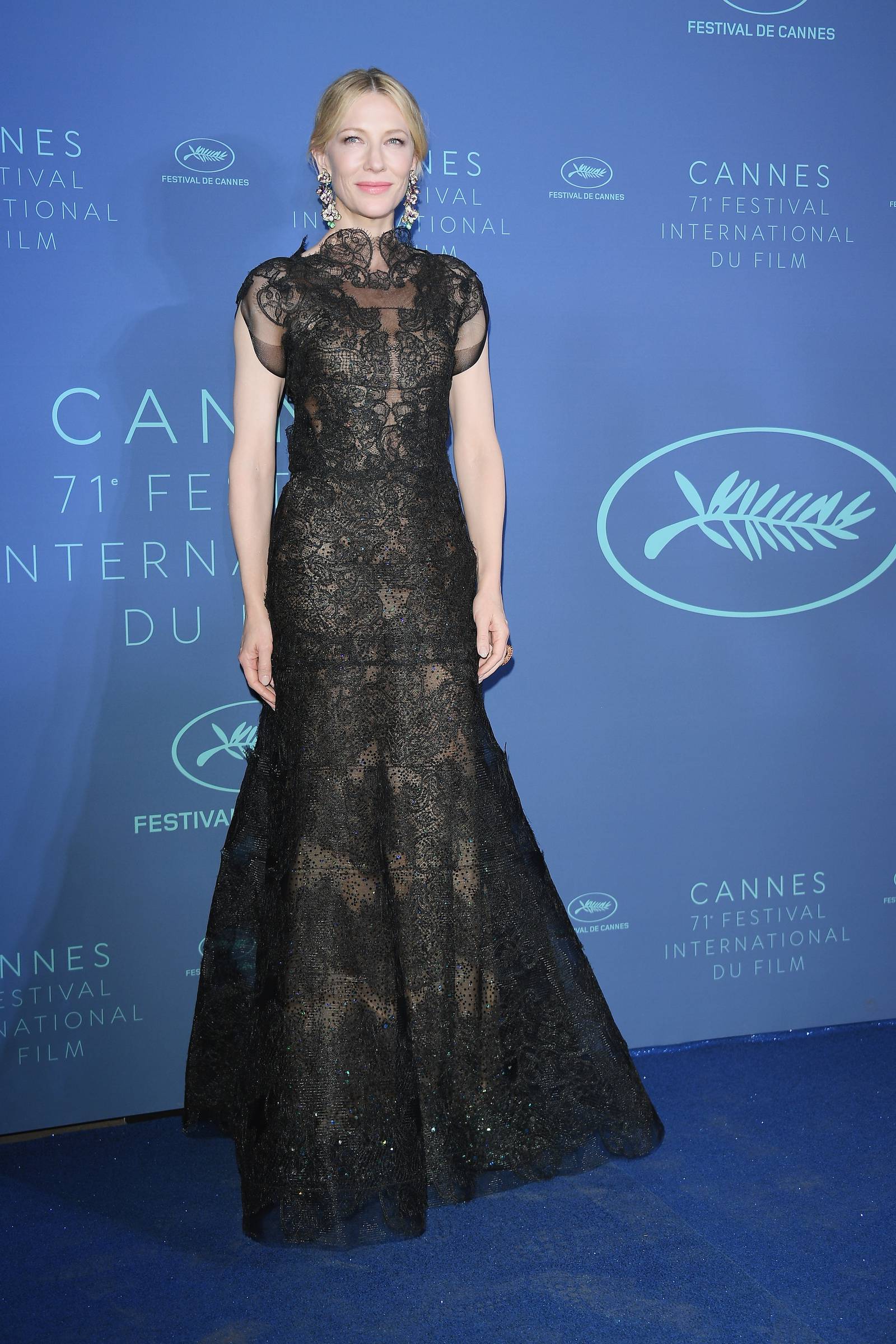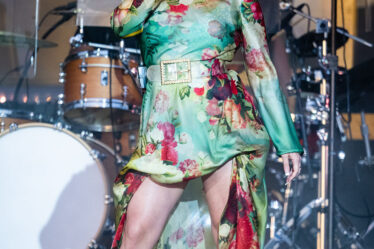
Cate Blanchett has created a new dialogue around the red carpet.
Of course, there are the headlines she garners for being a perennial style favourite, but more recently the swell of sustainable looks she’s worn to press engagements and high profile awards shows are attracting most of the attention.
“It should be completely unremarkable, the idea of re-wearing (clothes), because we do it in our daily lives,” the actress says over a Zoom call. “We do it out of habit, we do it out of choice, we do it out of necessity.”
It’s three days out from the 95th Academy Awards, where Blanchett is nominated for best actress for playing the titular role in Todd Field’s film Tár. Blanchett is speaking to the fact that, throughout the crowded schedule of parties, dinners, screenings and galas, she has almost exclusively re-worn or had designers reimagine dozens of red carpet looks.
Sometimes, it’s as simple as wearing a dress again — including a black satin Loewe suit first worn to the 2018 Cannes Film Festival and a black velvet Maison Margiela gown originally worn to the 2015 Oscars. On Wednesday evening, she re-wore an Alexander Vauthier Couture short sleeve jacket to Time’s Women of the Year Gala, where she was honoured.
Or it can mean working with a designer to reimagine the original garment, whether that be the bodice of a gown, an intricate piece of jewellery or one panel of lace. At the SAG Awards last month, for example, Blanchett wore a Giorgio Armani dress with lace that was repurposed from an Armani gown she wore to the Golden Globes in 2014 and again to the Cannes Film Festival in 2018.
Blanchett has been repurposing her couture for the better part of a decade, part of the star’s mission of promoting sustainability. It’s also a rebellion against the breakneck cadence of fashion industry “seasons,” and the “bloat and waste and excess [that] are really the enemy of creativity”. It’s a perspective, plus a collaborative approach to tapping into a designer’s creativity, that has deepened her relationships with designers, ranging from Giorgio Armani to Sarah Burton.
“It seems very virtuous to use that platform to denormalise a behaviour that only pushes overconsumption,” said Clare Waight Keller, whose colourful tiered Givenchy gown Blanchett wore to the 2018 Cannes Film Festival and again last month to the Berlin Film Festival. “To me, it feels very in sync with where our collective minds are in this day and age.”
Blanchett knows that choosing a dress for a red carpet appearance isn’t the same as picking clothes out of your closet in daily life. Stars like her are at the centre of a massive, strategic system, where looks are often conceived by a small army of managers, publicists and stylists and everything from the clothes to the accessories to the jewellery can be dictated by contracts with luxury brands.
“You can’t deny that there is an economy of sorts on the red carpet,” she says. “And beyond even the ‘fashion industry’ there are a lot of attendant industries that are reliant upon that exchange and that exposure.”
Blanchett is part of that system; she was announced as a brand ambassador for Louis Vuitton high jewellery last year (the actress wore a reworked Louis Vuitton necklace made from discarded or unused pearls to this year’s BAFTAs and again to Time’s Woman of the Year Gala). And her longtime stylist Elizabeth Stewart, herself a high profile figure dressing A-list names like Julia Roberts, Viola Davis and Amanda Seyfried, is a collaborator and champion of Blanchett’s sustainability efforts often posting all of the reworked or re-worn clothing details on her own Instagram.
Blanchett is highly involved in directing, selecting and reimagining her looks. She balks at viewing red carpet dressing in purely transactional terms, and especially to describing it as a “machine,” a word implying one has no agency.
“I like to think of it as an organism rather than a machine,” she said. “There’s many mechanisms that go into changing this organism to a healthy organism, to a beautiful organism. … It’s a shared challenge.”
Rethinking the Speed of Fashion
Blanchett’s decision to rewear her red carpet looks stems from her need for comfort both in what she’s wearing and in being aligned with her values.
“It’s an expression of who you are and how you look at the world,” she said. “I’ve always re-worn and recycled and all of those things. There’s nothing remarkable about that. There are millions of people doing that. But I think in those moments I want to feel comfortable, and I can’t feel comfortable anymore either in my creative life, creating without intent or wearing without intent.”
She also sees it as a way to lead by example.
“I think that there’s a lot of people like me who are tired of the churn,” says Blanchett. “But who also want to keep the industry healthy in all its dimensions. There’s a chance here to redefine the notion of luxury. I think that it’s bringing back the cherished love aspect of it.”
The message isn’t always received as intended: at a time when the ethics of secondhand fashion are fiercely debated on TikTok, some questioned whether garments like the repurposed black lace Armani dress the actress wore to this year’s SAG Awards are true examples of sustainable dressing.
“We support the rewearing, but we cringe a little at how much she’s changing these garments from their original designs,” the fashion bloggers Tom and Lorenzo wrote after the dress made its third appearance. “Kinda defeats the whole point of a rewear if you’re basically having a new outfit made.”

Blanchett and her designer collaborators say radically changing garments to give them a second – or even third – life is the point.
“Reimagining lace and creating a new version of a garment in a way means recognising that clothes are living things and part of our daily life,” Giorgio Armani told BoF in an email. “Reusing part of a garment to create something new should be normal. The idea that a dress is only worn for a public outing, a photograph, or one single occasion couldn’t be further from my way of thinking and is completely incompatible with a responsible approach and with the care we should have for the planet today.”
Burton has also refashioned looks for Blanchett including turning a suit jacket into a dress, that the designer then turned into a pantsuit and that ultimately did not require more fabric than the initial garment.
Blanchett also works with local brands like Australian labels Esse and E Nolan who use sustainable fabric and create made to measure clothing and wears new looks made from reclaimed or deadstock fabric. Los Angeles-based eco-conscious brand Wolk Morais has dressed Blanchett numerous times, most recently in an upcycled red ultra-suede suit during her Tár press tour and also in a reclaimed black and white sequin and silk matte jersey dress for a January cover of Variety. Designer Brian Wolk claims that Blanchett appearing in their clothing has been a boon to both their business and attracting the interest of other celebrities who are sustainably minded.
“That exposure has had a noticeable change in terms of our footprint.” Says Wolk. “And hopefully it inspires other designers to investigate recycled fabrics around them and rework pieces from past collections.”
Wolk adds that he believes that the ripple effect of what Blanchett continues to do through clothing has already caused a sizable swell of change that stems beyond the red carpet.
Blanchett is more modest in discussing her impact.
“I’m a speck of dust in this very huge and ever-changing industry,” she says. “But I do think that to just continue to make more and consume more is an expression of a failure of imagination. And I’ve always looked at the great pillars of the fashion industry as being incredibly imaginative.”




